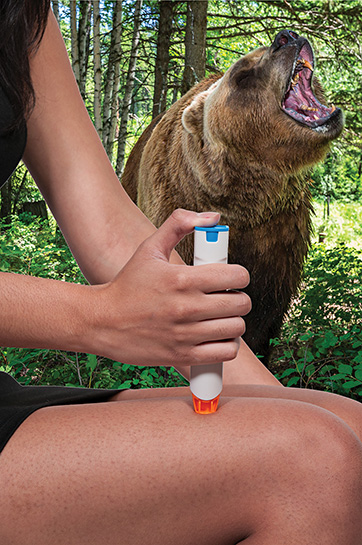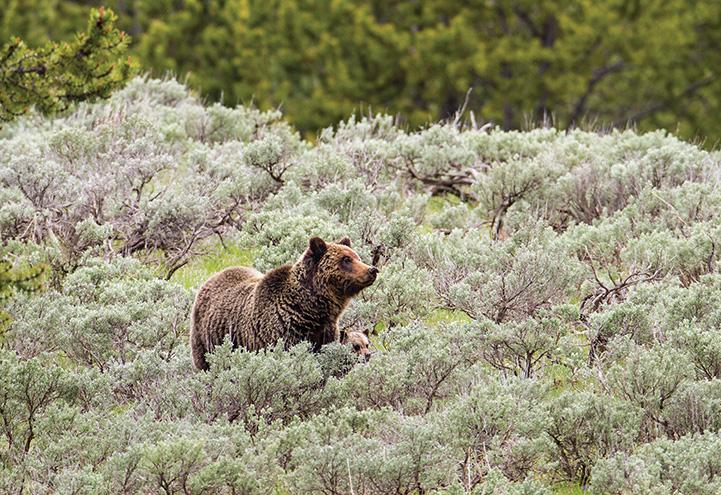Distance Learning
Staying safe in bear country.
Bears are often depicted as savage man-eaters in the media, likely due to the tendency to sensationalize individual incidents for the sake of ratings. Others view them as cuddly animals akin to playful depictions in children's toys, books, and TV shows. Both perspectives are equally false and can be dangerous for bears, as the ones that do attack humans often end up being killed as a result.
On average, grizzly bears kill three people a year in the US and Canada, compared to the 15 killed by domestic dogs. When visiting a national park, you're more likely to die from a tick bite or bee sting than a bear. Most grizzly attacks are territorial rather than predatory. Usually, the bear just wants you away from it or its young, and brutal force is an effective way to make that happen.
Typically, before a grizzly attacks, it growls, snorts, stamps the ground with its foot, and mock charges once or twice. If the impending threat refuses to leave, it will then attack. Attacks by females with cubs may not involve these preliminary actions, however.
Rarely, a grizzly will attack a human out of desperation or extreme hunger. Also infrequently, one might eat a human it kills in a self-defense attack. Nonetheless, living in close proximity to humans can be a factor in major bear attacks. Once a bear becomes habituated, it loses a natural fear of people. And if that bear associates humans with food, an attack is much likelier.
The best thing you can do before entering bear territory is become bear-aware. Be sure to properly store your food (including your pet's), cooking equipment, toiletries, recyclables, and garbage in a bear-proof container, locked in your car, or hung high between trees away from your campsite. Keep your dog on a leash or under strict voice command. Carry bear spray and know how to use it. Know the types of bears you could encounter, how to identify them, and their different behaviors. Black and grizzly bears react differently to human interaction.
If visiting a park, check in at the visitor center to find out the locations of the latest bear sightings, and exercise proper caution. Stay on official trails and camp in designated campsites.
When moving through the backcountry, travel only during daylight, as bears are most active at dawn and dusk. Make noise and travel in a group when possible. Keep a close eye on children, and talk, sing, and clap near streams and areas of low visibility.
Pay attention to your surroundings—tracks, scat, and habitat are indicators to key into. Black bear tracks have the toes separated in a curved paw print with short claw marks, while grizzly tracks will have longer claw marks with close toes that make a straight line across the top of the print.
Black bears and grizzlies are often confused for one another as they can be appear similar in color and size. Black bears have tall ears, flat noses, short claws, and a rump higher than their shoulders. Grizzlies have short, round ears, round noses, long claws, rump lower than shoulders, and a prominent shoulder hump—this is the dead giveaway. If you see one at a distance, give it plenty of space, and if possible, return the way you came. If you must continue, take a generous detour.
If you encounter a grizzly on a trail, do not run or make eye contact. Do not scream or yell or drop your pack. Do not turn your back on the bear. Pick up small children immediately and stay together if you're in a group. Talk to the bear in a calm voice and get your spray ready. If it's stationary, slowly back away, making sure you're not between the bear and its cubs. If it charges, fight the impulse to run and stand your ground. If the bear charges within 25 feet, deploy bear spray. If it makes contact, curl up in a ball or lie flat on your stomach, and cover your neck. Against all urges, remain calm until the bear leaves.
Beari-Pen
What would you do if faced with an attacking grizzly? Shoot it? Good luck, Calamity Jane. Spray it? I hope you're upwind. Run; climb a tree; knock down your buddy and then run? Maybe. But what if you didn't have to do anything at all? What if, in fact, you could simply block out the entire experience and wake up as if from a dream? Now you can.
"The most common advice for victims of bear attack is to play dead and be quiet," explains Riley Fullershift, who runs Bozeman-based sports-pharmaceutical startup DrugRug, Inc. "But that’s just illogical. If you're being attacked by a 600-pound bear, being raked with four-inch claws, getting bitten and badgered, most people will go berserk—screaming, thrashing, fighting back. That's where our new product, the Beari-Pen, comes into play." According to Fullershift, Beari-Pen is an entirely new kind of bear survival tool: a prescription-grade instant sedative. The real twist? It's not for the bear.

"We asked ourselves, 'How can we play dead without freaking the f#@k out?' and the answer seemed clear. We needed to be dead—or at least make the bear think so." The idea is to administer DrugRug's potent proprietary sedative (derived from the poison of Arctic peat frogs) just before the bear attacks, rendering the user completely unresponsive. The bear sees the threat is gone, and in 99% of cases, leaves the area without further provocation. In testing, victims are often completely untouched, while others suffer only minor injuries. The delivery system is identical to a common epinephrine injection pen: flip off the protective cap, stab the short, robust needle into soft tissue—even through clothes—and you'll be out cold in less than a second. The pens weigh just a couple ounces, can be carried easily in a pocket, have an unlimited shelf life, and will reliably knock out individuals up to 300 pounds.
Playing possum sounds all well and good—but what about the remaining 1%? "Well, statistically, that is definitely the short straw," Fullershift says. "The bear was going to kill you anyway, but at least with Beari-Pen, you won't feel a thing." Learn more at playdeadtolive.com. —Joe King












